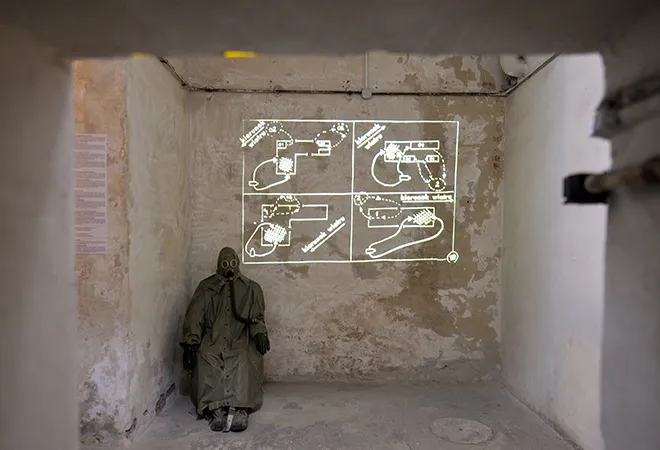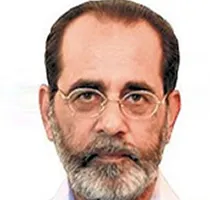When Trump leaves office and Biden takes over, humanity should breathe a huge sigh of relief. Trump is the only recent President to threaten the use of nuclear weapons. In August 2017, Trump warned North Korea, “They will be met with fire and fury like the world has never seen…” Even as President-elect, Trump had already put the nuclear option on the table. Responding to a question on whether he would rule out using nuclear weapons, in April 2016, he said, “Would there be a time when it could be used? Possibly. Possibly.” This is one reason why the Doomsday Clock, established in 1947 by a group of scientists who developed the first nuclear weapons but now wanted to convey the risk it posed to humanity, was calibrated in 2020 to 100 seconds to midnight, the closest to a global catastrophe that it has ever been.
Despite this stark warning from the Doomsday Clock, many nuclear strategic experts tell us that we should feel more secure. After all, the nuclear taboo has held since 1945 despite the Cold War. US-USSR/Russia arms control agreements have helped reduce nuclear weapons stockpiles from nearly 65,000 in late-1970s to less than 15,000. The Nuclear Non-Proliferation Treaty (NPT) that entered into force in 1970 for 25 years with about 50 states was extended indefinitely in 1995 and is the most widely accepted treaty, with 190 adherents.
The Treaty on the Non-Proliferation of Nuclear Weapons (NPT) may well be the most universal treaty but it has reached the limits of its success. The five nuclear-weapon-states party to it (USA, Russia, UK, France and China) blithely ignore their responsibility for nuclear disarmament, convinced that NPT legitimises their possession of nuclear weapons and the four non-NPT countries (Israel, Pakistan, India and North Korea) have built weapons for their own security reasons. Indeed, in a direct violation of the spirit of the NPT, Trump said blithely to Bob Woodward, “I have built a nuclear — a weapons system that nobody’s ever had in this country before. We have stuff that you haven’t seen or heard about.” William Lambers, a nuclear weapons specialist, has observed that “while for over 60 years presidents in both parties worked to reduce nuclear weapons and the likelihood of their use, Trump has begun unravelling these efforts.”
Today’s politics is marked by growing major power rivalry, sharpening nuclear multipolarity. More usable weapons and blurring of the nuclear-conventional line creates a permissive scenario, raising the likelihood of the non-use taboo being breached.
Deterrence 1.0, which governed the US-Soviet Union nuclear rivalry during the Cold War, was characterised by arms control agreements and efforts to curb global proliferation. Deterrence 2.0 characterised the post-Cold War era of unipolarity, when the US largely determined the global nuclear agenda. The US strengthened its Conventional Prompt Global Strike (CPGS) system, which was intended to reduce the salience of nuclear weapons. However, this had an unintended consequence as China and Russia embarking on their own nuclear modernisation programmes. During this period, new nuclear-weapons states emerged: India and Pakistan (that were not signatories to the NPT); and North Korea (which withdrew from the NPT).
In the current changed political reality, old instruments of US-Soviet arms control and non-proliferation no longer work. Secondly, new developments in cyber and space technologies as well as hypersonic missiles and missile defence systems are challenging old deterrence equations. In Covid terminology, the challenge has mutated and old prescriptions do not help. Today’s politics is marked by growing major power rivalry, sharpening nuclear multipolarity. More usable weapons and blurring of the nuclear-conventional line creates a permissive scenario, raising the likelihood of the non-use taboo being breached. Old arms control agreements are under strain and some (such as the Anti-Ballistic Missile Treaty (ABM), Intermediate Range Nuclear Forces Treaty (INF) and the Treaty on Open Skies) have collapsed. The stage is set for Deterrence 3.0 except that this time, it is not a ‘known-unknown’ but an ‘unknown-unknown.’
Indications are that US President-elect Joe Biden is inclined towards the Russian proposal to extend New START (Strategic Arms Reduction Treaty). This treaty lapses on 5 February 2021. This will provide some breathing room. But, will this be enough to restore nuclear sanity? Traditional arms control and non-proliferation believers believe ‘Yes’ but the Doomsday Clock indicates otherwise. Bridging this gap is necessary and while it does not mean discarding old instruments or treaties, it does mean realising their limitations in today’s nuclear world.
This is why the world needs Deterrence 3.0.
Deterrence 3.0 has to create a new consensus for a multipolar nuclear world, a world not of nuclear parity but asymmetry in terms of both sizes and nature of arsenals. This asymmetry in turn exacerbates mistrust, where some countries believe that ambiguity and unpredictability strengthen their deterrence. Such need to preserve ambiguity makes cooperative verification difficult, especially when cyber and AI developments are heightening risks of an accidental nuclear collision.
Traditional arms control and non-proliferation believers believe ‘Yes’ but the Doomsday Clock indicates otherwise.
The Biden administration therefore provides an opportunity to step back from the Trump administration’s hyperbole of ‘fire and fury.’ We should use this opportunity to create a platform where the nine nuclear-weapon-states can at least meet, have intensive discussion and agree that preventing the use of nuclear weapons is a shared responsibility. They should also exchange views on how to step back from escalatory postures; and share experiences on fail-safe, critical and secure communication channels to be employed in times of crisis. Deterrence 3.0 recognises that nuclear weapons cannot be wished away. What is critical is to reduce their salience in security doctrines and ensure that they are never used.
There are two complementary approaches, one doctrinal and the other technical. The first is the policy of no-first-use. In other words, nuclear weapons would be used only for retaliatory purposes. This diminishes the role of nuclear weapons.
The second is de-alerting or increasing the lead-time between the decision to use a nuclear weapon and the time that it takes to implement the nuclear strike. The issues of hair-trigger-alert (which enables nuclear weapons to be launched in minutes) and highly centralised control has been the subject of debate and discussion in the US in recent years.
In Asia, where several nuclear weapons states are locked in decades-long conflicts, Deterrence 3.0 is crucial in ensuring that conflicts do not escalate to the use of nuclear weapons. This includes China and India, as well as nuclear flashpoint regions such as South Asia and the Korean Peninsula. In the India-China context, the nuclear dimension has never surfaced because both countries maintain a no-first-use policy. However, in South Asia, both India and Pakistan have experienced many close shaves: Kargil in 1999, the terrorist attacks on the Indian Parliament (2001) and in Mumbai (2008), and the latest incident in Pulwama, Kashmir, in 2019, leading to the crash of an Indian jet in Pakistan-administered Kashmir. Given these close shaves, the world must once again focus on the dangers of an accidental nuclear exchange.
The goal of Deterrence 3.0 is to ensure that once again, the Doomsday Clock is recalibrated far away from midnight. We will all sleep better when that happens.
This commentary originally appeared in Asia Research Institute.
The views expressed above belong to the author(s). ORF research and analyses now available on Telegram! Click here to access our curated content — blogs, longforms and interviews.




 PREV
PREV


